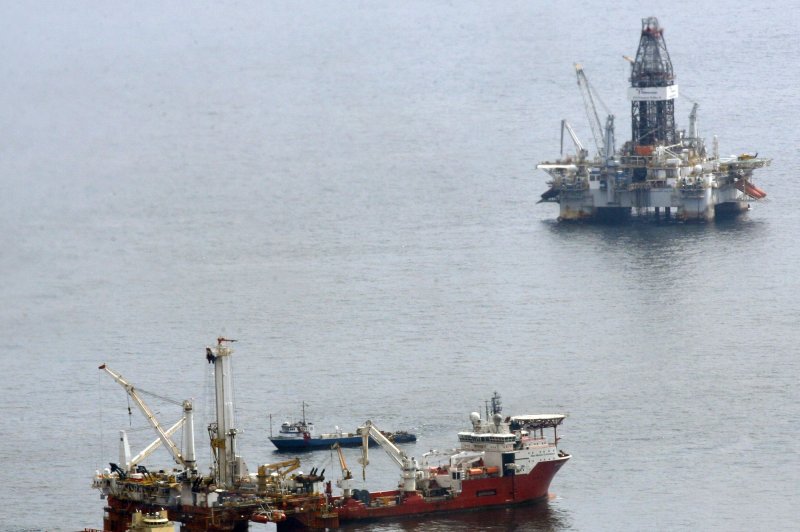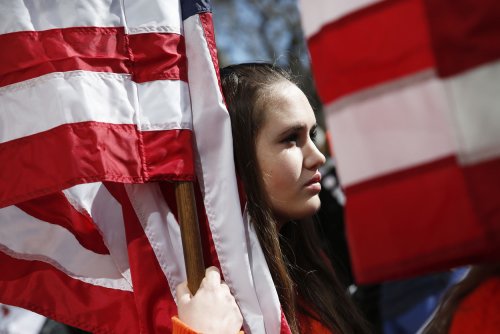An offshore trade group gives the Trump administration a mixed grade on sector support ahead of an auction for rights to drill into the Gulf of Mexico. File Photo by A.J. Sisco/UPI |
License Photo
Aug. 14 (UPI) -- Ahead of the next U.S. offshore lease for oil and gas drilling rights, a trade group was mixed on the Trump administration's support for the sector.
The U.S. Bureau of Ocean Energy Management on Wednesday holds a lease for the rights to tap into more than 14,000 sites spread out over 78 million acres in the U.S. waters of the Gulf of Mexico. The government estimates the entire region holds about 48 billion barrels of undiscovered and technically recoverable oil and 141 trillion cubic feet in natural gas.
Ahead of the lease, Tim Charters, the vice president of political affairs at the National Ocean Industries Association, said the U.S. offshore sector is starting to recover after a period of low spending and caution that followed the Deepwater Horizon incident in 2010.
"Unfortunately, the administration's decision to not lower future deepwater royalty rates to match shallow water and onshore royalty rates does nothing to hasten overall recovery," he said in a statement.
Going against recommendations, U.S. Interior Secretary Ryan Zinke in April said the government won't cut royalty rates on profits from offshore drilling. In February, the Royalty Policy Committee, a panel made up for state, tribal and industry representatives, recommended cutting the rate from 18.75 percent to 12.5 percent.
Zinke said that pro-industry moves by President Donald Trump suggested the oil and gas sector could continue on its own momentum alone. Industry groups, however, said it would be tough to stay competitive without incentives like an adjustment to royalty rates.
Mexico this year awarded 16 contracts to 14 companies grouped into 12 bidders during its latest auction for offshore contracts. The total investment over the lifetime of the contracts could be as high as $8.6 billion. A March auction in U.S. waters brought in only a fraction of that amount in high bids.
Charters said Wednesday's auction would be a test of whether or not recovery offshore was uniform or inconsistent. Profits for the offshore segment are higher, but margins are slim. With oil prices up 40 percent from this point last year, and Trump's decision to unravel some of the policies enacted after the BP spill, the NOIA suggested there was a silver lining.
"The administration's efforts to streamline and reduce some burdensome regulations that do not enhance safety will encourage companies to continue to invest in the U.S. Gulf of Mexico -- an integral slice of America's economic and energy security pie," he said.
After the 2010 incident, which left 11 rig workers dead, the Interior Department issued stricter rules on safety measures like the blowout preventer, which failed at the Deepwater Horizon, and well-casing pressures. Under Trump, the department found some of those provisions were "potentially unduly burdensome" and did little to actually improve safety or protect the environment.















